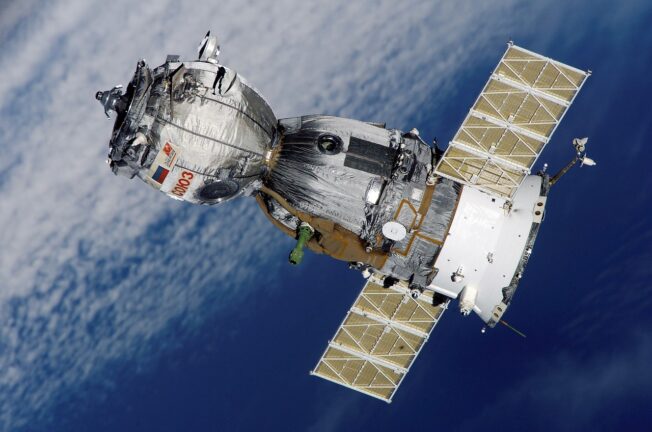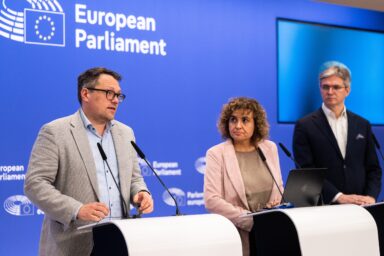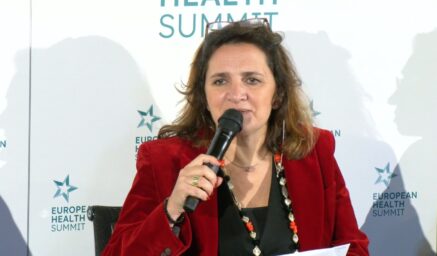Recent blackout in Spain, broken backbone cables at the bottom of the Baltic Sea, jammed GPS signals or shutdown of the Starlink satellite system over the struggling Ukraine. All of this has recently underlined the urgent need for Europe to adopt new communications technologies. Especially the space-based ones.
This was one of the conclusions of the June meeting of the Transport, Telecommunications and Energy Council (TTE).
At the meeting, the heads of the relevant ministries identified satellite connectivity as a cornerstone of Europe’s strategic autonomy and security architecture. Until now, the Union has focused mainly on terrestrial infrastructure, i. e. 4G/5G or fibre-optic networks.
In the meantime, however, technological advances have significantly reduced the cost of building and launching satellites. And they are set to become an alternative to terrestrial networks.
You might be interested
“Ensuring a resilient satellite network under EU control is essential, especially in times of geopolitical uncertainty. In order to ensure connectivity, different systems – satellites and space systems, undersea cables, fixed networks and mobile infrastructure – need to be taken into account and approached in a comprehensive manner,” said Council spokesman Niels Timmermans.
Ensuring a resilient satellite network under EU control is essential, especially in times of geopolitical uncertainty. – Council spokesman Niels Timmermans
Ministers agree, among other things, that a predictable regulatory environment is a prerequisite for promoting similar innovations and for effective management of individual frequencies. “Harmonised rules for market entry and ensuring a level playing field can further support the development of innovation,” Timmermans adds.
However, no concrete and practical conclusions emerge from his statement. The ministers will address the issue at their next meeting, which should take place before the end of this year.
Plans worth billions
The Council and the European Parliament agreed on the need to strengthen secure communications, in particular through a new satellite system, back in 2023, when a new regulation was issued to launch the EU Secure Connectivity Programme for the period 2023 to 2027.
And even then, European politicians were already talking about the fact that secure and reliable communication was a key priority.
Among other things, the programme has set a fundamental objective for the EU to deploy a satellite system called IRIS² (Infrastructure for Resilience, Interconnectivity and Security by Satellite) to enable the provision of secure communications services. Initially, the date of 2027 was mentioned, but now the European Commission is more likely to use the date 2030.
This is also mentioned in the concession agreement signed this January with the SpaceRISE consortium, which is to develop and operate the Union’s satellite system. The plan is for a multi-orbit constellation of around 290 satellites.
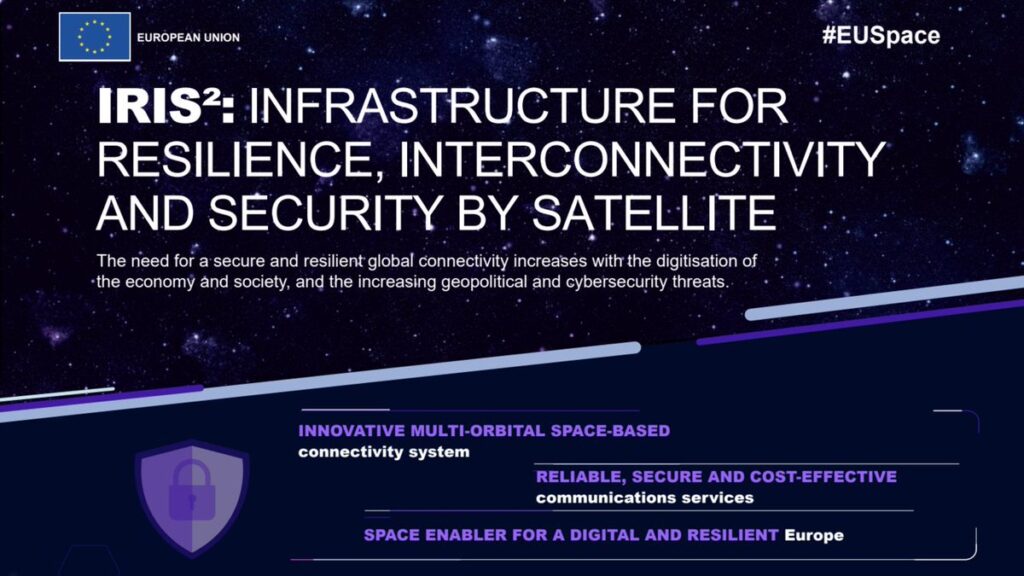
According to the Commission, IRIS² could represent the EU’s third key programme to address long-term challenges in the areas of safety, security and resilience. It should provide its services to national institutions and thus contribute to Europe’s strategic autonomy in the technological field.
The satellite system is designed to provide secure connectivity to all member states of the Union and its government agencies. At the same time, it is intended to offer high-speed broadband to the private sector and European citizens, including in areas with existing poor connectivity.
From the outset, the aim has been to ensure that even in the event of cyber attacks or natural disasters, the quality, fast, independent, and resilient interconnection of – not only – critical infrastructure would be ensured even in the event of ground communications failures.
IRIS² could represent the EU’s third key programme to address long-term challenges in the areas of safety, security and resilience. – European Commission
The parallel focus on the private sector is intended to make European industry more competitive. The whole programme is part of Europe’s Global Gateway Strategy, which aims to enable internet access anywhere in Europe, but also to ensure secure connectivity in other geopolitically important areas such as the Arctic and Africa.
Funding for the programme has been lined up by the European Commission from the current EU budget, the Multiannual Financial Framework for the period 2021 to 2027, at a cost of around €2.5 billion. Part of it will come from the EU Space Programme or initiatives such as Horizon Europe and the Neighbourhood, Development and International Cooperation Instrument – Global Europe (NDICI).
Space “traffic jams”
The European Union also has to deal with the problem of “crowded” space – the number of satellites and space debris in orbit has been growing steadily recently. Space traffic management is becoming an increasingly important area. It is the increasing traffic in space that may directly threaten planned European space projects.
Since 1957, more than 20,000 stellites have been launched into orbit, of which more than 13,500 are still in space. Of these, approximately 11,000 are directly operational.
The European Union is therefore also focusing its activities on “addressing the global challenge of orbital congestion” and ensuring access to space for future generations. In this context, experts point out that up to 300,000 additional satellites are expected to be launched into orbit over the next decade.
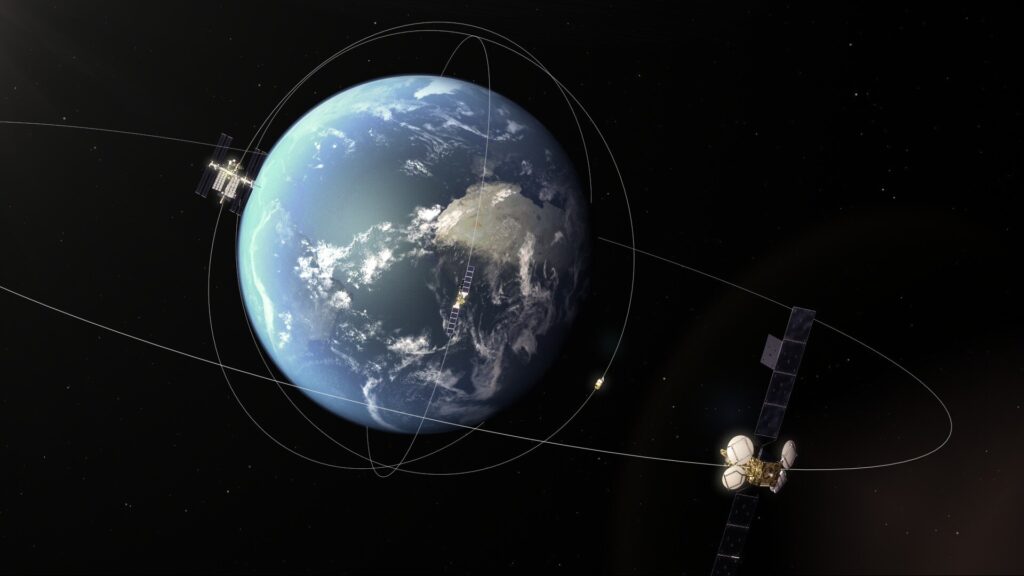
The EU’s approach in this regard, according to its own materials, is based on four fundamental pillars. The first is an assessment of civilian and military needs, hand in hand with an assessment of the impact of space operations on both civilian and military operations. The second pillar is referred to by the Union itself as ‘operational capabilities’ and consists of developing the tracking and identification of space debris.
In addition, the EU is also focusing on legislation and standardisation, i.e. enhanced Union rules and international cooperation in space activities. The final priority is international partnership with global actors, both in the area of rules and standards.
A key part of the space traffic management strategy is the space object tracking system, which involves a network of more than 40 sensors and protects more than 250 spacecrafts.
